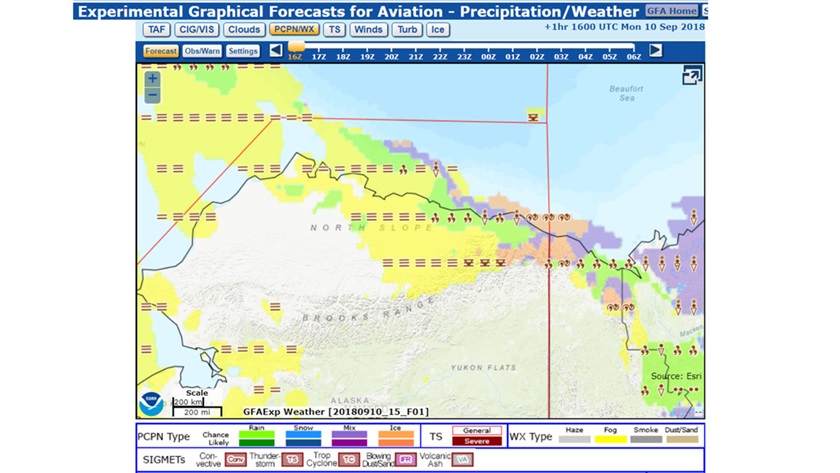What’s next for aviation weather forecasting?
Technology points the way to the future
The FAA’s project to transition the area forecast, a core weather briefing resource, from text to a graphical presentation has been well received—and pilots have let their ideas be known about what further refinements they would prefer, AOPA said at recent meetings on modernization strategies for aviation weather services.
In August, AOPA participated in the National Weather Service’s Aviation Weather Center Summer Testbed and helped evaluate the Graphical Forecasts for Aviation (GFA) that replaced the former text-based area forecasts for the continental United States—an initiative AOPA strongly supports for the numerous benefits graphical weather provides.
The GFA will be extended to cover the Caribbean, the Gulf of Mexico, and the Atlantic Ocean in 2019, and eventually to Hawaii and Alaska, said Rune Duke, AOPA senior director of airspace, air traffic, and aviation security, who represented AOPA at the testing session in Kansas City, Missouri.
Evaluating the expanded GFA, available only in experimental status now, occurred in two steps. “We would use the tool to flight plan,” he said. “Later in the day we would verify the tool's performance with observations.” Each day of testing, participants flight-planned using different routes and aircraft. “So essentially we were doing a series of case studies. We would provide feedback on the tools-interface throughout,” he said.

Duke presented an AOPA pilot survey indicating that the graphical replacement of text-based weather is receiving a positive reception from the majority of pilots, and that increasing numbers of pilots are going online to get their weather information.
According to the survey, pilots believe product improvements in the pipeline should enhance the user interface, and sharpen forecasts of cloud locations, bases, and tops. Duke urges pilots to visit the experimental version of the GFA and provide feedback via a survey.
Tracking turbulence
Pilots place high value on accurate information about turbulence, and Duke presented survey results expressing general aviation’s point of view at a Turbulence Impact Mitigation Workshop Sept. 5 and 6. The session was sponsored by the FAA, MITRE Corp., and the National Center for Atmospheric Research.
He described AOPA’s efforts to raise pilots’ awareness of the importance of submitting pilot reports, noting that pireps about turbulence are critical for pilots and forecasters alike. He also noted recent National Transportation Safety Board recommendations directed to NWS that call for guidance on the issuance of turbulence-related airmets, and development of “formal training to your aviation weather forecasters on the analysis, interpretation, and forecasting of low-level turbulence.”
‘VFR not recommended’
In meetings with the Aviation Weather Research Group, AOPA shared its ideas for future weather research, urging continued work to improve how flight service specialists provide “VFR not recommended” cautionary statements to pilots when weather briefings necessitate the warning. The “VFR not recommended” statement from briefers is intended to help pilots avoid unintentional VFR flight into instrument meteorological conditions—a cause of many fatal accidents—but the statement has been inconsistently issued.
“AOPA and the FAA agree additional research is needed to help improve the application of this statement or to find some other useful intervention,” Duke said.





